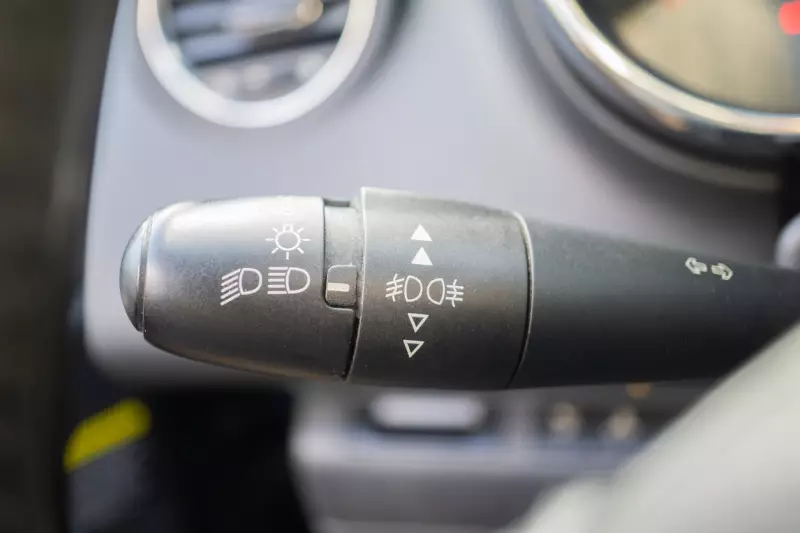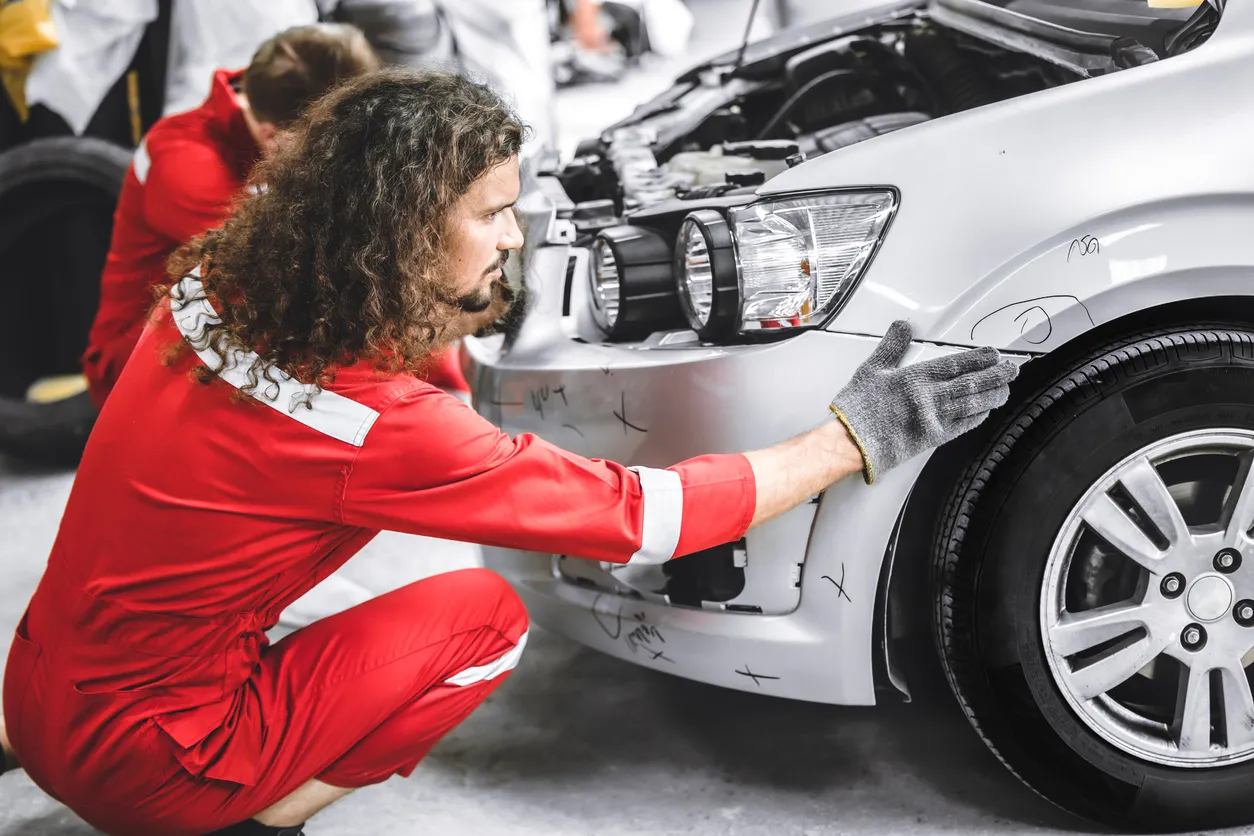- What Are Daytime Running Lights and Why Do You Need Them?
- What Does DRL Mean On a Car?
- What Is The DRL Symbol On Your Car Dashboard
- Why Are Daytime Running Lights Beneficial
- How To Turn on Daytime Running Lights
- How To Turn Off Daytime Running Lights?
- How to Install Daytime Running Lights
- What States Require Daytime Running Lights
What Are Daytime Running Lights and Why Do You Need Them?

Modern vehicles are coming with more and more lights all over. It's common to get cars, trucks, and SUVs with light bars that wrap around the other lights on the vehicle, and these accent lights are often to change the appearance of the vehicle or to help others see it while driving down the road. These ambient lights are very common in northern countries such as Sweden, Norway, and Canada, and they are slowly being added onto vehicles in warmer, more southern countries as well. If you're looking to buy a new car soon, they probably have daytime running lights (DRL) on them.
What Does DRL Mean On a Car?
Daytime running lights are special lights that are often installed around the headlights on the front of your vehicle. These lights usually look like LED bars that wrap your headlights and create a bright glow at the front of your vehicle. These DRL lights make you more visible as you drive around, especially in dim conditions that aren't quite dark enough for your headlights. Many new vehicles are being sold with DRLs today because they are mandated in some countries and because they look modern and attractive.
If you get a vehicle with DRL lights, you won't use them to see where you're going, but you'll rely on them for others to see where your vehicle is. The daytime running lights are brighter than parking lights but dimmer than the low beams on your headlights, and they're angled to face oncoming traffic. This means they are more visible than most other types of lights, and they make your vehicle more visible as well.
What Is The DRL Symbol On Your Car Dashboard

The DRL (Daytime Running Light) symbol on your car dashboard indicates that the vehicle's daytime running lights are active. Typically represented by a light icon with a series of lines pointing outward, the DRL symbol ensures you know when these lights are functioning, which is particularly important for safe driving in various conditions.
A blinking DRL symbol should not be ignored, as it may compromise the visibility and safety benefits that daytime running lights provide. To address this issue, it is advisable to consult your vehicle's manual for specific troubleshooting steps or visit a professional mechanic to diagnose and fix the underlying problem, ensuring your car remains visible and safe on the road.
Why Are Daytime Running Lights Beneficial
- Help other cars see you in dim conditions
- Give your ride a modern look
- Enable you to accent your vehicle and make it stand out
So many vehicles in the United States come with daytime running lights for style purposes, even though they aren't legally required yet. There are some real functional benefits to DRL lights as well, and it can benefit you to look for vehicles that come equipped with the lights. The number one reason you should think of adding daytime running lights is to help your vehicle get noticed by other drivers. They won't do anything on bright and sunny days, but when you drive on a cloudy day or when you're driving as it first begins getting dark out and your headlights aren't yet on, your DRLs will make your car easier for other drivers to see. In these crucial driving conditions, a set of daytime running lights can help you stay safe. These lights are also fashionable. They make vehicles look modern, and most new cars add them on for this reason as well. If you get a car with DRLs, you will feel like you're driving something more luxurious, and that's a good feeling.
How To Turn on Daytime Running Lights
To turn on your vehicle's daytime running lights (DRLs), start by locating the light control switch, usually found on the dashboard or steering column.
- Ensure the vehicle's ignition is on, as daytime running lights (DRLs) activate when the engine is running.
- Identify the DRL symbol on the switch, usually resembling a sun or light bulb.
- Turn the switch to the DRL position or set the light control to 'Auto' in some vehicles.
- Consult your owner's manual for specific instructions, as the process may vary by make and model.
Once activated, DRLs will enhance visibility and safety during daylight hours.
How To Turn Off Daytime Running Lights?
While there usually isn't a reason to want to turn off your daytime running lights, some people would like them off temporarily. If you want your DRL lights off for a short period of time while you're sitting in your vehicle, while parked in one location at the drive-in movies, for instance, you have a simple way to disable your DRL on most vehicles.
Disabling your DRLs is as simple as turning off your vehicle, engaging the parking light, and turning the vehicle back on. On many vehicles, this is what's needed to turn the daytime running lights off. There will be some vehicles that don't allow you to turn the lights off and a few others that have a different method for shutting the DRLs off, but this is the most common way to disable them.
If you want to know how to turn on daytime running lights, they normally turn on automatically whenever you start your vehicle. If you have the parking brake engaged and the lights aren't turning on, shut down your vehicle, disengage the parking brake, and turn it back on to get it to pop back on. It's easy to get the DRL lights on or off depending on what you need, and you don't have to think about operating these lights at all other than that.
How to Install Daytime Running Lights
 If you want to make your vehicle stand out more for safety and style, installing a set of daytime running lights to a vehicle that doesn't have them is a good way to accomplish this goal. There are a few different ways for you to achieve this. You could get accessory lights that attach to the body of your vehicle for some nice ambient lighting that helps you stand out. There are many aftermarket accessory light kits that will give you some strips of light wherever you want them.
If you want to make your vehicle stand out more for safety and style, installing a set of daytime running lights to a vehicle that doesn't have them is a good way to accomplish this goal. There are a few different ways for you to achieve this. You could get accessory lights that attach to the body of your vehicle for some nice ambient lighting that helps you stand out. There are many aftermarket accessory light kits that will give you some strips of light wherever you want them.
Instead of that, you can look at specialty headlights and other front-end lights that add daytime running lights to your vehicle while modifying or utilizing the existing light structure that's already there. Swap your standard headlight for a DRL headlight. Also, consider using a light accent kit to give your vehicle light accents that help it stand out. There are many aftermarket products available, but you will have to run wires and drill to install many of the aftermarket DRLs today.
DRLs Are Offered in Many Different Shapes
When you add daytime running lights to your vehicle, you can get them in many different shapes. There are straight light bars, circular halo lights, swooping lights, square bar lights, and so many more. Try and choose a style that fits your vehicle if you're going to add on the lights.
You should also think about whether a used vehicle comes with DRLs before you purchase it. Just like you need to look at the vehicle history report to find out how the vehicle was treated by its other owners before you, you need to know about all the features it comes with, including daytime running lights.
Modern vehicles usually come with daytime running lights, and they're usually positive enhancements. If you don't have DRLs, you may want to consider adding them to your vehicle for style and safety. Either way, you can stay safer with these simple lights, which can be installed by a professional quickly.
What States Require Daytime Running Lights
Daytime running lights (DRLs) are required in several states to improve vehicle visibility during daylight hours, reducing the risk of accidents. States like California, New York, and Illinois have specific regulations mandating the use of DRL lights on certain types of vehicles, particularly newer models. Some states like Oregon and Virginia require DRLs under certain conditions, such as during periods of poor visibility. While federal regulations encourage the adoption of DRLs for safety, individual state requirements may vary. It's important for drivers to check their local laws to ensure compliance,improve road safety and avoid potential fines.
- What Are Daytime Running Lights and Why Do You Need Them?
- What Does DRL Mean On a Car?
- What Is The DRL Symbol On Your Car Dashboard
- Why Are Daytime Running Lights Beneficial
- How To Turn on Daytime Running Lights
- How To Turn Off Daytime Running Lights?
- How to Install Daytime Running Lights
- What States Require Daytime Running Lights
FREE Vehicle Search
- Accidents
- Problem Checks
- Title Records
- Recalls
- Values
- Specs
-
InfoPay, Inc. (dba GoodCar) is an Approved NMVTIS Data Provider
-
-












































